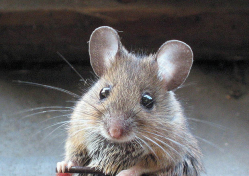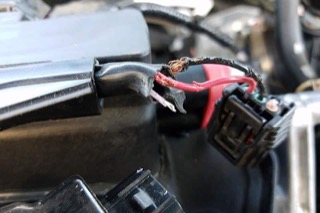Lawsuit Says Toyota’s Use of Soy-Based Wiring is Attracting Rodent Damage

When Toyota switched away from using plastic or glass-based inulation in favor of soy, it invited in some very unwelcome Toyota loyalisits. According to the plaintiff, she learned the hard way about the soy wiring when her Avalon wouldn't start and a look under the hood showed wires chewed, so she had the car towed to a dealer. Toyota told her rodents had caused the damage and it would be no problem to repair the problems as long as she could cough up $6,000 to cover the bill.
The soy-based wiring is allegedly attracting in rodents, who love to chew it up and use it for nesting material. The lawsuit, Heidi Browder vs. Toyota Motor Corporation, et al. follows a similar lawsuit filed against Honda earlier this year.
More information on carcomplaints.comWant to Learn More?
Rodents Can't Get Enough of Toyota's Soy Wire Coating
Somewhere in the mid-2000's there was an industry-wide push by automakers to replace plastic and glass-based wiring insulation with a more eco-friendly soy-based coating. It's biodegradable, commendable, and a complete disaster for owners.

Related Toyota Generations
At least one model year in these 34 generations have a relationship to this story.
We track this because a generation is just a group of model years where very little changes from year-to-year. Chances are owners throughout these generation will want to know about this news. Click on a generation for more information.
5th Generation 4Runner
- Years
- 2010–2020
- Reliability
- 46th out of 81
- PainRank™
- 5.47
- Complaints
- 112
3rd Generation Avalon
- Years
- 2005–2012
- Reliability
- 63rd out of 81
- PainRank™
- 10.34
- Complaints
- 405
4th Generation Avalon
- Years
- 2013–2018
- Reliability
- 57th out of 81
- PainRank™
- 8.95
- Complaints
- 89
1st Generation Avalon Hybrid
- Years
- 2013–2018
- Reliability
- 36th out of 81
- PainRank™
- 2.89
- Complaints
- 30
7th Generation Camry
- Years
- 2012–2017
- Reliability
- 77th out of 81
- PainRank™
- 23.66
- Complaints
- 380
2nd Generation Camry Hybrid
- Years
- 2012–2017
- Reliability
- 49th out of 81
- PainRank™
- 6.13
- Complaints
- 51
10th Generation Corolla
- Years
- 2007–2013
- Reliability
- 73rd out of 81
- PainRank™
- 21.84
- Complaints
- 550
11th Generation Corolla
- Years
- 2014–2019
- Reliability
- 67th out of 81
- PainRank™
- 13.64
- Complaints
- 205
1st Generation FJ Cruiser
- Years
- 2007–2014
- Reliability
- 40th out of 81
- PainRank™
- 4.05
- Complaints
- 96
2nd Generation Highlander
- Years
- 2008–2013
- Reliability
- 71st out of 81
- PainRank™
- 15.07
- Complaints
- 261
3rd Generation Highlander
- Years
- 2014–2019
- Reliability
- 64th out of 81
- PainRank™
- 10.45
- Complaints
- 174
2nd Generation Highlander Hybrid
- Years
- 2008–2013
- Reliability
- 48th out of 81
- PainRank™
- 5.69
- Complaints
- 75
3rd Generation Highlander Hybrid
- Years
- 2014–2019
- Reliability
- 30th out of 81
- PainRank™
- 2.03
- Complaints
- 11
5th Generation Land Cruiser
- Years
- 2008–2020
- Reliability
- 15th out of 81
- PainRank™
- 0.7
- Complaints
- 19
2nd Generation Matrix
- Years
- 2009–2013
- Reliability
- 42nd out of 81
- PainRank™
- 4.28
- Complaints
- 101
1st Generation Mirai
- Years
- 2016–2019
- Reliability
- 6th out of 81
- PainRank™
- 0.21
- Complaints
- 1
1st Generation Prius c
- Years
- 2012–2019
- Reliability
- 26th out of 81
- PainRank™
- 1.29
- Complaints
- 21
3rd Generation Prius
- Years
- 2010–2015
- Reliability
- 69th out of 81
- PainRank™
- 14.54
- Complaints
- 487
4th Generation Prius
- Years
- 2016–2021
- Reliability
- 43rd out of 81
- PainRank™
- 4.65
- Complaints
- 59
1st Generation Prius Plug-in
- Years
- 2012–2015
- Reliability
- 22nd out of 81
- PainRank™
- 0.93
- Complaints
- 8
1st Generation Prius v
- Years
- 2012–2017
- Reliability
- 37th out of 81
- PainRank™
- 3.15
- Complaints
- 48
1st Generation RAV4 EV
- Years
- 1997–2003
- Reliability
- 37th out of 81
- PainRank™
- N/A
- Complaints
- 0
3rd Generation RAV4
- Years
- 2006–2012
- Reliability
- 79th out of 81
- PainRank™
- 29.11
- Complaints
- 957
4th Generation RAV4
- Years
- 2013–2018
- Reliability
- 74th out of 81
- PainRank™
- 22.01
- Complaints
- 366
2nd Generation Sequoia
- Years
- 2008–2020
- Reliability
- 29th out of 81
- PainRank™
- 1.53
- Complaints
- 38
3rd Generation Sienna
- Years
- 2011–2020
- Reliability
- 54th out of 81
- PainRank™
- 8.24
- Complaints
- 164
2nd Generation Tacoma
- Years
- 2005–2015
- Reliability
- 72nd out of 81
- PainRank™
- 20.75
- Complaints
- 631
3rd Generation Tacoma
- Years
- 2016–2021
- Reliability
- 70th out of 81
- PainRank™
- 14.73
- Complaints
- 241
2nd Generation Tundra
- Years
- 2007–2021
- Reliability
- 56th out of 81
- PainRank™
- 8.92
- Complaints
- 268
1st Generation Venza
- Years
- 2009–2015
- Reliability
- 50th out of 81
- PainRank™
- 6.98
- Complaints
- 111
2nd Generation Yaris
- Years
- 2006–2013
- Reliability
- 55th out of 81
- PainRank™
- 8.57
- Complaints
- 196
3rd Generation Yaris
- Years
- 2014–2019
- Reliability
- 24th out of 81
- PainRank™
- 1.22
- Complaints
- 11